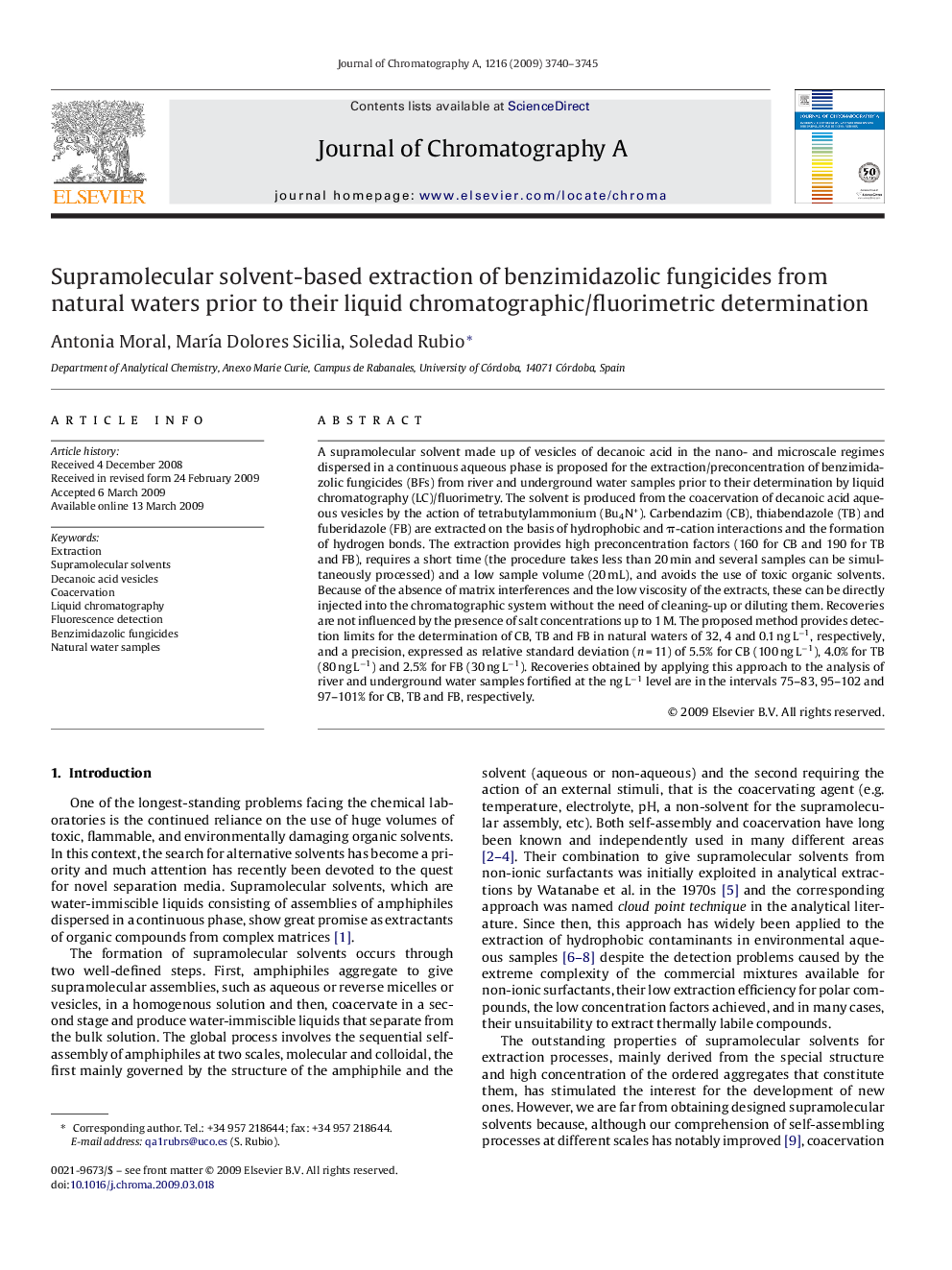| Article ID | Journal | Published Year | Pages | File Type |
|---|---|---|---|---|
| 1205498 | Journal of Chromatography A | 2009 | 6 Pages |
A supramolecular solvent made up of vesicles of decanoic acid in the nano- and microscale regimes dispersed in a continuous aqueous phase is proposed for the extraction/preconcentration of benzimidazolic fungicides (BFs) from river and underground water samples prior to their determination by liquid chromatography (LC)/fluorimetry. The solvent is produced from the coacervation of decanoic acid aqueous vesicles by the action of tetrabutylammonium (Bu4N+). Carbendazim (CB), thiabendazole (TB) and fuberidazole (FB) are extracted on the basis of hydrophobic and π-cation interactions and the formation of hydrogen bonds. The extraction provides high preconcentration factors (160 for CB and 190 for TB and FB), requires a short time (the procedure takes less than 20 min and several samples can be simultaneously processed) and a low sample volume (20 mL), and avoids the use of toxic organic solvents. Because of the absence of matrix interferences and the low viscosity of the extracts, these can be directly injected into the chromatographic system without the need of cleaning-up or diluting them. Recoveries are not influenced by the presence of salt concentrations up to 1 M. The proposed method provides detection limits for the determination of CB, TB and FB in natural waters of 32, 4 and 0.1 ng L−1, respectively, and a precision, expressed as relative standard deviation (n = 11) of 5.5% for CB (100 ng L−1), 4.0% for TB (80 ng L−1) and 2.5% for FB (30 ng L−1). Recoveries obtained by applying this approach to the analysis of river and underground water samples fortified at the ng L−1 level are in the intervals 75–83, 95–102 and 97–101% for CB, TB and FB, respectively.
